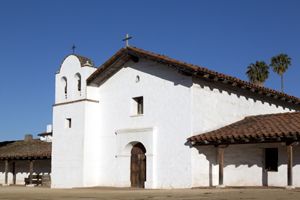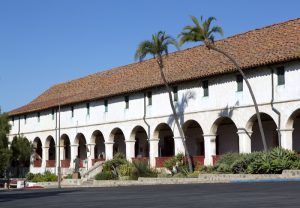During the 18th Century, the Spanish established a chain of four military fortresses along California’s coast to protect their holdings, the last of which was the Santa Barbara Royal Presidio, established in April 1782. A wilderness frontier at the time, these presidios protected the missions and settlers against Indian attacks, guarded the country against foreign invasion, and provided a seat of government.
The Presidio’s first commander, José Francisco Ortega, planned the fortifications and irrigation works, obtained livestock, established orchards, and began large-scale farming.
In 1786, the nearby Mission Santa Barbara was established, and the settlement that grew up around the Presidio and mission became the town of Santa Barbara.
The Santa Barbara Presidio served as the military and government headquarters for the lands between the Pueblo of Los Angeles and San Luis Obispo until 1846. During this time, it was never attacked by strong military forces but suffered several devastating earthquakes in the early 19th century, which destroyed most of the fortress. By the Mexican-American War, very little remained of the fort, which was surrendered without a fight in December 1846.
The El Presidio de Santa Barbara is a California State Historic Park located in downtown Santa Barbara. Two of its original buildings, now listed on the National Register of Historic Places, have been restored and five others reconstructed.
Contact Information:
Santa Barbara Trust for Historic Preservation
PO Box 388,
Santa Barbara, California 93102
805-965-0093
© Kathy Weiser-Alexander/Legends of America, updated November 2021.
Also See:


